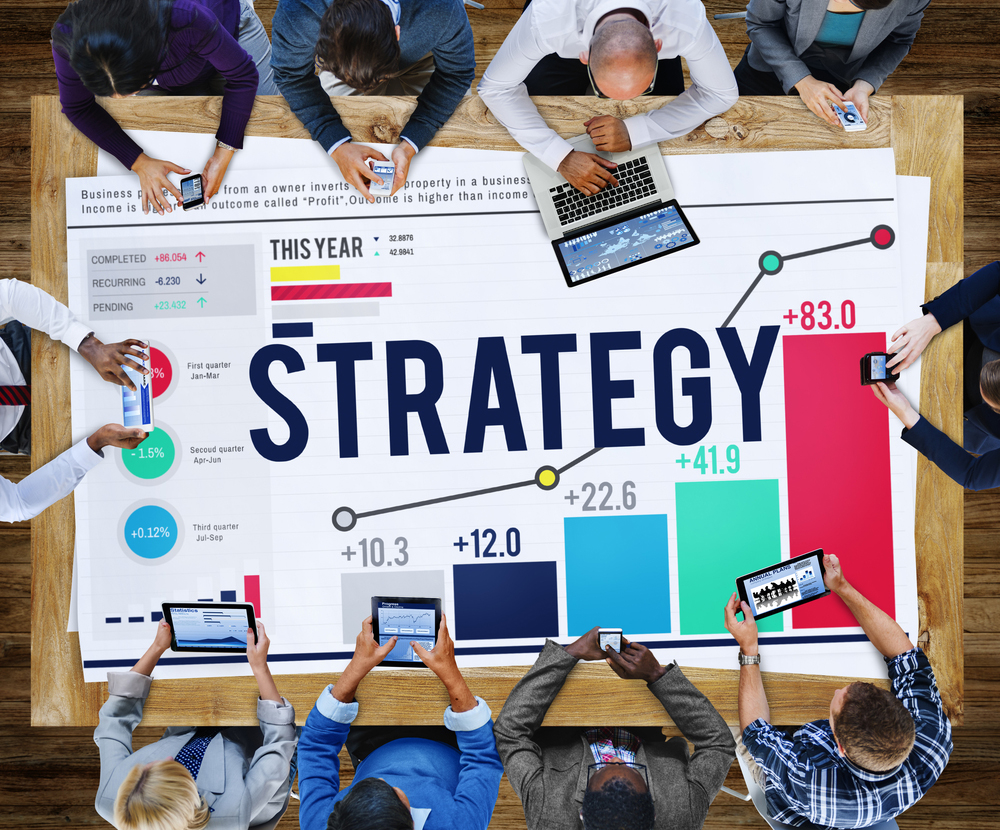
 If you asked your local butcher to suggest ideas for your dinner, would you be surprised if he suggested that you have the vegetarian option? Today, with the development of automatic data predictive analysis, you expect that your favourite sites will suggest ideas, services and products you like based on your profile. But that can be limiting, if you need to do something different or need to change, writes Kay McCarthy.
If you asked your local butcher to suggest ideas for your dinner, would you be surprised if he suggested that you have the vegetarian option? Today, with the development of automatic data predictive analysis, you expect that your favourite sites will suggest ideas, services and products you like based on your profile. But that can be limiting, if you need to do something different or need to change, writes Kay McCarthy.
Strategic planning is an important discipline and when used well, it can create real value for an agency and a client. Has it run the course in being able to add value beyond a narrow set of outcomes, limited to what the agency sells?
We operate in a fast paced world where a ‘slow-down and step-back’ to look at the bigger picture takes courage and a more strategic focus.
We operate in a world where agility, speed, leanness and velocity have become a necessary toolkit to survive. We are largely in reactive mode to the speed of change. There is a lot of talk about data and real time marketing and this is partly because of the rate of change but also consumers focused expectations, particularly that of Millennials.
Many brands are reinventing themselves to create new waves of growth. As a result, other disciplines are redefining what value they add and where to play. For example, creativity no longer just means advertising but extends to how we create business models and brands and how we redefine consumer offerings for relevance. Uber is trying to reinvent how people use and own cars. Netflix has done this with how we watch movies and Amazon with how we purchase. The world is fast being redefined so planning needs to use its own core strength to help itself.
Brands are levers for growth, often untapped or just confined to what the marketing department does;
Consumers today, Millennials in particular, have a different definition of what brands are. They expect brands to have values and beliefs and deliver upon them. They want brands to communicate openly with them, and to do what they say they will. Brands are experiences for them so all brand behaviours, actions and associations must be aligned to a core belief. The people who work for the brand and who interact with the consumer must also reflect and live out the brand values.
If they are to deliver and succeed, brands of today must have a well- defined core brand purpose and remain true to this, whilst critically adding value to people’s lives in a real way. This is referred to as having ‘authenticity’ and is proven to be a driver of loyalty, brand engagement and profitable growth.
Can strategy help itself?
There are two worlds of planning today. Limited and Unlimited.
The first one of these is planning as it always was but in a more specialised world of channels.
Planning in this case is a narrow offering living in specialised creative service agencies, offering digital, advertising or media. Highly specialised in that channel or a set of channels, it can create a connection plan, a better advertising brief or a customer journey. It is offering more efficient implementation. It will support what the agency sells so is limited. It creates charts that will make everyone look good and sound clever. The often argued side of this is that it integrates with its own creative department – this masks the truth that it won’t sell you what they don’t sell so is not optimal. In this world, it is part of ‘the package’.
But there is a second issue with this model. It is not only limited here but it is often reactive. This is due to the fact that clients often change every 18 months on average and they want a campaign that grabs attention for a short window. Many advertising and even effectiveness awards fall into this category (IAPI’s own study claims that the majority of its case have a proven effect but over the short -term.).
The future of this type of planning is for strategic planners to become orchestrators and lead the integration of all the brand touch points so that it feels like it not only comes from the same place but that it is making a significant impact at the right time and place. Less is often more here as the answer to many communication challenges is just more content push to add to the 6,000 messages we now encounter each day. Who is brave enough to shout stop and let’s do less? This model will continue and live in downstream value creation which could become commoditised or just badged by anyone in the agency who ‘can think a bit more’ than anyone else. There is good strategy and there is bad strategy and the risk of just downstream is that it is too short-term, too limited by its output and lacks full sight of the business strategy to be effective, not to mind helping clients in reinventing how they create value that is sustainable for their clients and end consumer.
The second model ‘unlimited’, is where planning can find a way to bring both unlimited and sustainable value for clients/brands and the consumer.
This is where strategy becomes a process for creating space to step back and rethink where the brand aligns with culture (internally and externally) and the business. This is a journey with many informed inputs, the role of the brand is redefined so that it can become a powerful lever of growth for the business. This will result in some disruptive shifts that will have not just profound impacts on the business but where the brand can bring a new energy to the business, the people in the organisation and the end consumer. This often means not just a new definition of the brand, but an entirely new way of managing the brand and organising the business. In this case, creativity in many forms follows as does innovation so it is part of the brand and business conversation and is now aligned to the needs of the company and the consumer.
This requires a new mind-set, skill-set and way of working for many and one where strategy leads the process working alongside other specialist inputs. Creativity is redefined so that the outputs are not limited but become a way of experience for the consumer. This is where value is developed along every step of the journey, research becomes a lot more focussed, data becomes fused with relevant insight and the process leads to unleashing new strategic possibilities. This means that strategists are not channel or ad planners but true strategists who can work with research, brands and businesses first with more diverse sets of experiences. Channel planners are not the same as brand strategists. Brand strategists are capable of delivering brand strategies and concepts, not just channel or ad plans or ideas. Brand concepts need to be capable of transforming companies not just limited to campaigns. A global example would be ‘Under Armour’ and local examples MCCP has worked on include Wild Atlantic Way and Ireland’s Ancient East.
In this world Strategic Planning can really become a creator of value and a game changer, but strategists need the ambition, experience and unlimited context to realise this.
Kay McCarthy, Founder and Managing Director, MCCP, The Authentic Brand People
First published in Irish Marketing Journal (IMJ Agency Issue 2016)© to order back issues please call 016611660






















